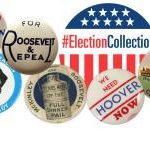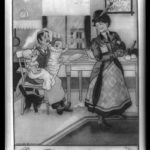The purpose of this lesson is to have students learn about each presidential election and presidential terms. Students will understand how various events in history shaped campaigns. Why elections were won and lost. What accomplishments and disappointments each president experienced. Each election and presidential term served had its own mark on history. The presentation to the class is the order of the elections starting with Washington’s first election and proceeding forward. The lesson plan was created to engage students in the election process and create interest in the coming presidential election.
Constituting America’s 90 Day Study of The Intrigue of Presidential Elections and Their Constitutional Impact is a resource guide for students. This study supplies many of the important facts and figures of each presidential campaign. There are also intriguing facts, stories, and information about the person, campaign, time in office and after the presidency.
Controlling the Campaign Narrative
See how the candidates, special interest groups and news outlets compete to get their narrative of the campaign heard – and evaluate the value of seeking multiple sources of information about the candidates and their campaigns. Registration at NewseumED is required to view this resource.
Presidential Campaign Memorabilia on DocsTeach

This page includes a variety of primary sources in the form of artifacts, photographs, documents, and more; as well as additional online resources. Themes highlight political memorabilia from presidential campaigns from the 1850s through the 1990s. Items come from the holdings of the Presidential Libraries of the National Archives.
Choice Board – How Effective Are Presidential Campaign Ads?
The methods in which candidates, political parties and interest groups promote their positions and policies have evolved since the first television campaign ads aired. In this lesson, students will view videos of historical presidential campaign advertisements and analyze the features found within each to determine the overall effectiveness.
Evaluating Election Ads
Going for the Jugular
It happens sooner or later in every presidential race: attack ads drown out the promises of positive campaigns. Do these dark battles have any value?
African American Religious Leadership and the Civil Rights Movement
The modern Civil Rights Movement was the most important social protest movement of the twentieth century. People who were locked out of the formal political process due to racial barriers were able to mount numerous campaigns over three decades to eradicate racial injustice and in the process transform the nation. In its greatest accomplishment, the Civil Rights Movement successfully eliminated the American apartheid system popularly known as Jim Crow. Registration is required to view this resource. Free registration for students and teachers required to access resource.

